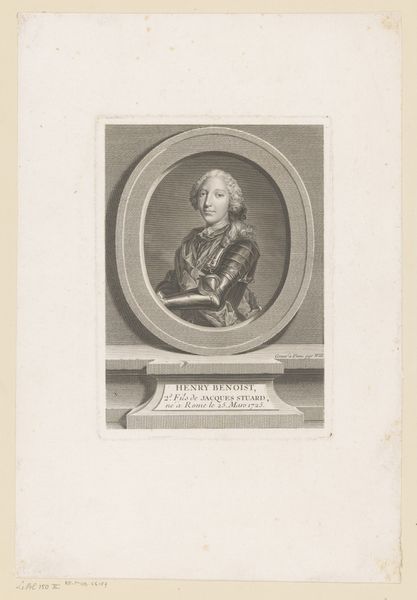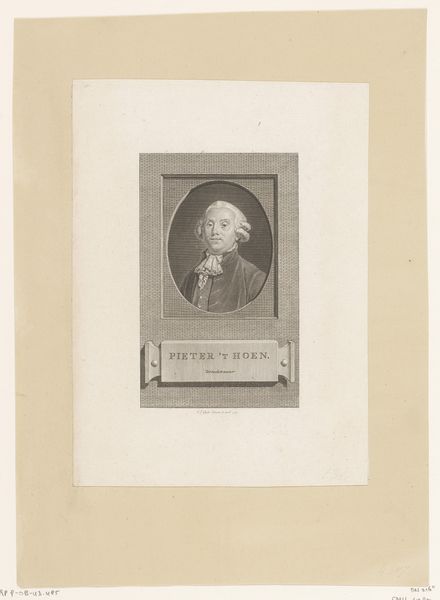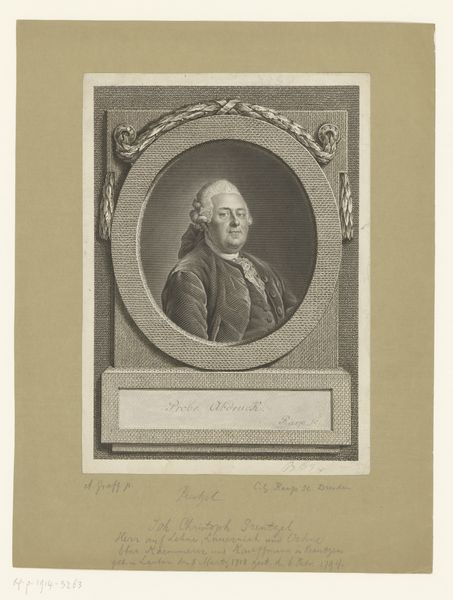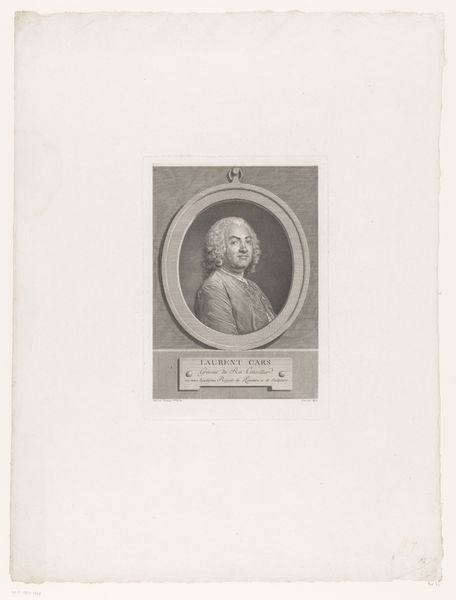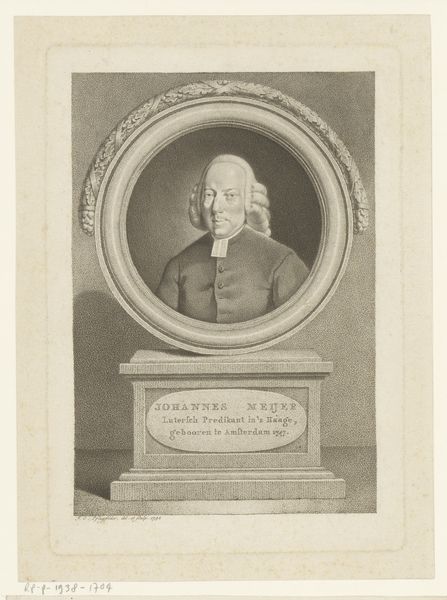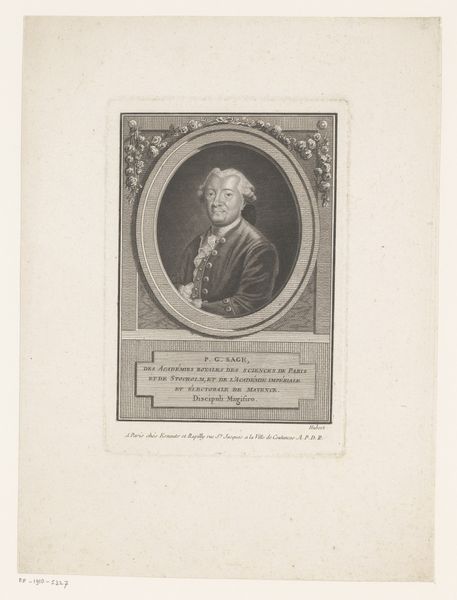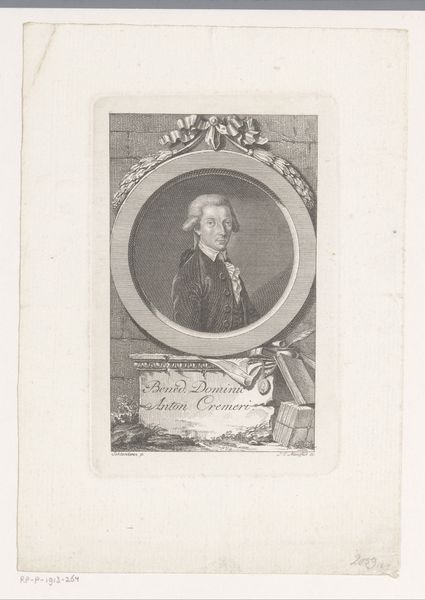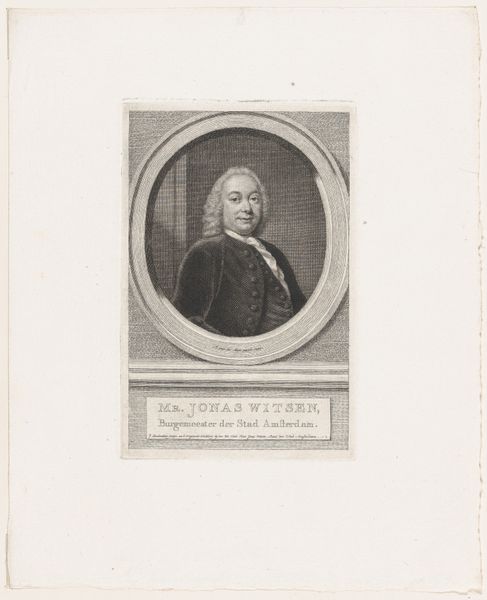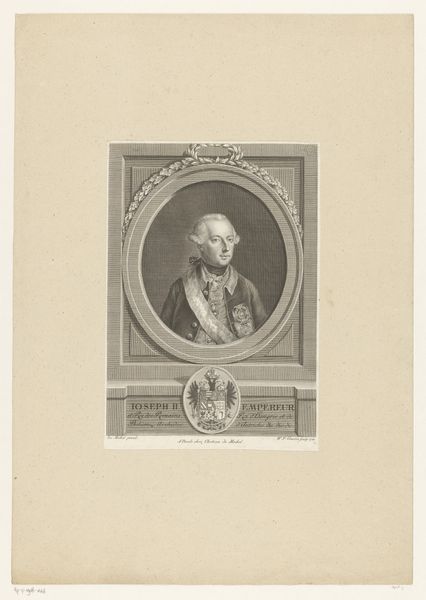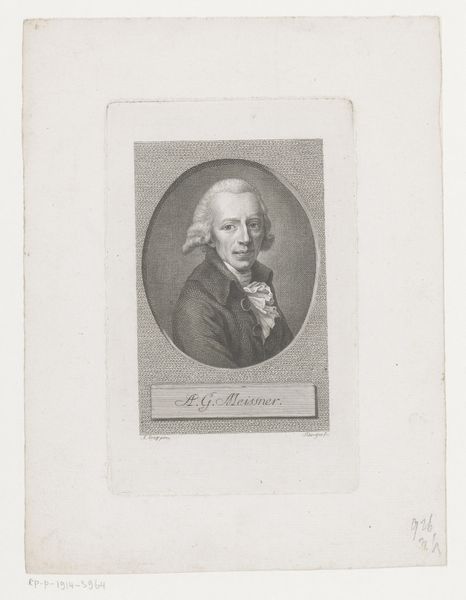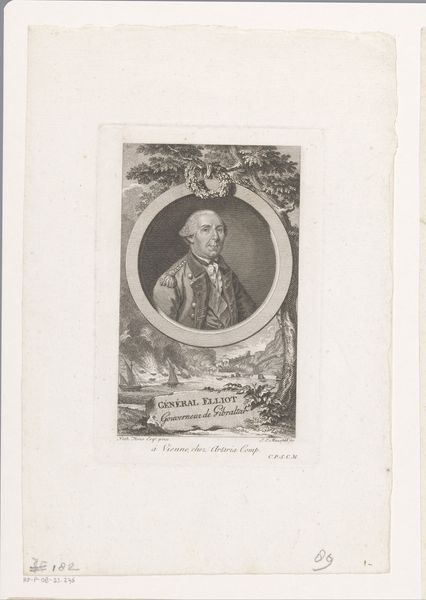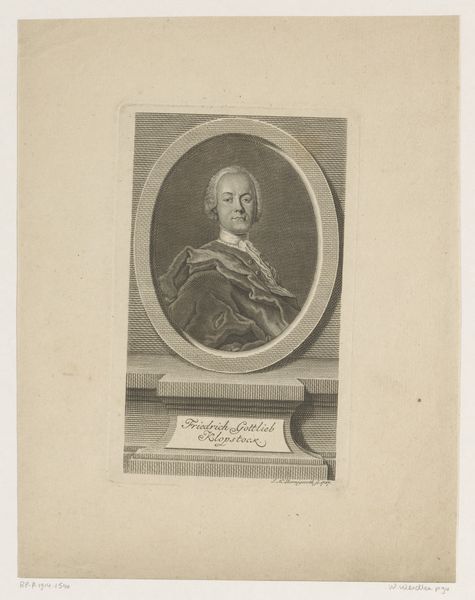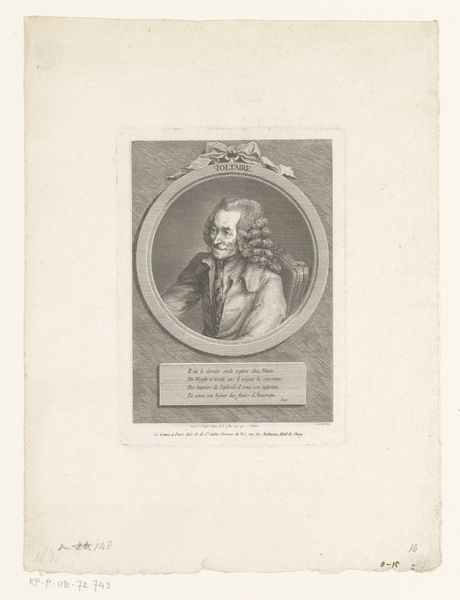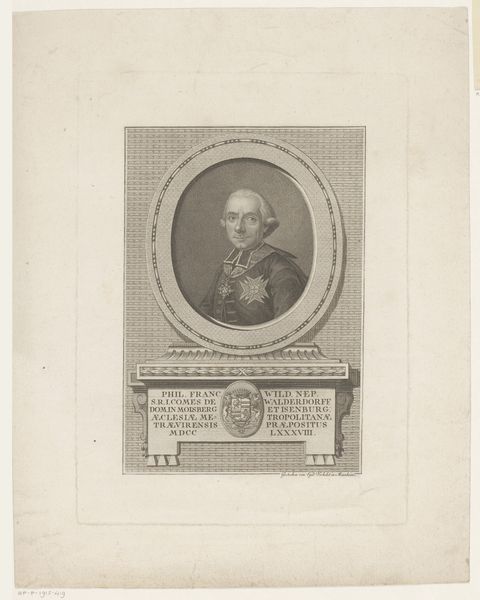
Dimensions: height 274 mm, width 202 mm
Copyright: Rijks Museum: Open Domain
Curator: The stillness in this image, it's almost…sepulchral, isn’t it? As if we're peering into a grand crypt. Editor: Precisely! What captures our gaze is Johann Friedrich Bause's print, a likeness of Albrecht von Haller rendered in 1773, primarily through engraving. Its monochrome presentation immediately imparts that air of historical gravity, doesn’t it? Curator: Oh, definitely. He’s framed, literally and figuratively. That oval vignette with the decorative garland feels like something unearthed rather than composed. Editor: Observe how Bause skillfully manipulates the lines, thickening and thinning them to create an almost sculptural effect. This enhances Haller's presence, adding depth and weight to the depiction. Curator: True, you get a palpable sense of his texture. The folds in his coat, the sheen of his wig. I’m curious about von Haller; there's a sharpness, an intense look in his eyes. What was his story? Editor: Albrecht von Haller was a Swiss anatomist and physiologist, quite a prominent figure in his time. This portrait served perhaps to immortalize his intellectual contribution, framing him not just as a man but as an icon of Enlightenment thinking. Curator: He doesn't just peer out; he scrutinizes. Do you think this engraving does justice to the man? I see precision in the engraving's detail but wonder about its emotional scope. It feels like a stone rendering of life. Editor: You touch upon a fascinating duality. There's the formal perfection that printmaking demands and then, as you rightly note, the translation of human presence into this medium. But maybe that constraint itself speaks volumes, capturing an era's emphasis on reason, order, and permanence. Curator: Makes you ponder on the different dimensions an artist faces working in those times. Perhaps that technicality even adds something unique. Thanks for letting me chew on that with you. Editor: Indeed, thank you, those thoughtful ponderations on visual style help bridge the gap between the portrait’s tangible design and its significance in cultural heritage.
Comments
No comments
Be the first to comment and join the conversation on the ultimate creative platform.
